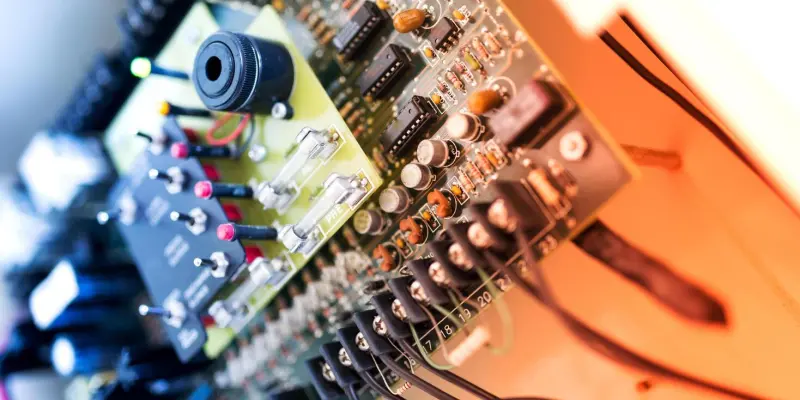In the realm of technological advancements, the sound card holds a distinctive charm for many enthusiasts. While modern motherboards come equipped with advanced onboard audio capabilities, and USB Digital-to-Analog Converters (DACs) have become the standard, the allure of dedicated sound cards from the 1990s remains undiminished for some. These vintage devices aren’t just seen as relics of a bygone era; they’re appreciated for their historical significance and the unique auditory experience they offer. TechTuber Necroware has undertaken the meticulous task of restoring two iconic 1990s Creative Sound Blaster cards, shedding light on the challenges and triumphs of such a venture.
First Project: Reviving the Creative Sound Blaster 16 CT2230
Necroware’s journey into the realm of vintage sound card restoration began with the Creative Sound Blaster 16 CT2230 from 1994. This card, showing visible signs of damage, presented a unique challenge. The broken trace and damage were instantly noticeable, drawing attention to the intricate work needed to breathe life back into this old piece of technology. Armed with a digital microscope and a keen eye, Necroware was able to identify and bridge the gap in the trace using a soldering station, a testament to the value of precise and patient workmanship.
Once the trace had been successfully bridged, the next step was to see if the card could be recognized by modern software. Using DOS Unisound drivers, Necroware was able to confirm that the card was indeed functional. The real test came when he decided to verify the audio output using the game Descent II. The Yamaha OPL3 FM synthesizer on the card produced clear and accurate audio, proving the repair had been successful. Furthermore, to address the physical damage, a 3D printer was employed to create a new bracket, ensuring the card not only worked but also retained its structural integrity.
Second Project: The Creative Sound Blaster 16 IDE CT2290
The second project that Necroware undertook was even more challenging. The Creative Sound Blaster 16 IDE CT2290 card posed significant issues, having previous wear and tear from being used for parts. Initially non-functional, the card’s problems were manifold, demanding a thorough investigation and surgical precision during repair. Necroware began diagnosing the card, identifying issues with the data bus transceiver and buffer which initially stymied his efforts due to faulty resistors that refused to cooperate. After several attempts, the solution to get the card functioning emerged from replacing a problematic bus transceiver. This allowed the Unisound driver to detect the card, but it did not completely resolve the audio issues experienced during testing. Consulting an extensive hardware programming guide further helped isolate the primary issue: a missing CT1748A chip vital for sound effects. By installing a socket for the chip to facilitate future repairs, Necroware managed to replace the missing component and fully restore the card’s functionality, showcasing the depth of his technical skills and dedication.
Community Engagement in Vintage Tech Repairs
An interesting aspect of Necroware’s restoration process was the engagement and feedback received from the tech-savvy community. For instance, a viewer pointed out a simpler solution to the second project’s problem. By merely setting a jumper on the PCB to bypass the missing chip, this would have potentially accounted for a quicker fix. This not only underscores the collective knowledge within the community but also highlights the collaborative spirit in the vintage tech repair scene. The journey of restoring these sound cards is not merely about bringing old hardware back to life. It reflects a deeper appreciation and understanding of the technological heritage that shaped modern computing experiences. Each restored device tells a story of innovation, a nod to the engineering marvels of the past. Through Necroware’s endeavors, one learns to value both the complexity of these historical artifacts and the resourcefulness required to preserve them.
The Significance of Vintage Technology Preservation
In the world of technological advancements, the sound card holds a special allure for many enthusiasts. Despite the sophisticated onboard audio capabilities of modern motherboards and the widespread adoption of USB Digital-to-Analog Converters (DACs), dedicated sound cards from the 1990s continue to captivate a segment of the tech community. These vintage devices are cherished not merely as relics of a bygone era but also for their historical significance and the unique auditory experience they provide.
Among those dedicated to preserving this piece of audio history is TechTuber Necroware, who has taken on the meticulous task of restoring two iconic 1990s Creative Sound Blaster cards. His efforts highlight both the challenges and rewards of delving into such a restoration venture. Through Necroware’s detailed chronicling, enthusiasts gain insights into the intricacies involved in resurrecting these classic sound cards, appreciating the blend of nostalgia and technical prowess required. It serves as a testament to the enduring legacy of these devices in an era dominated by newer audio technologies.

